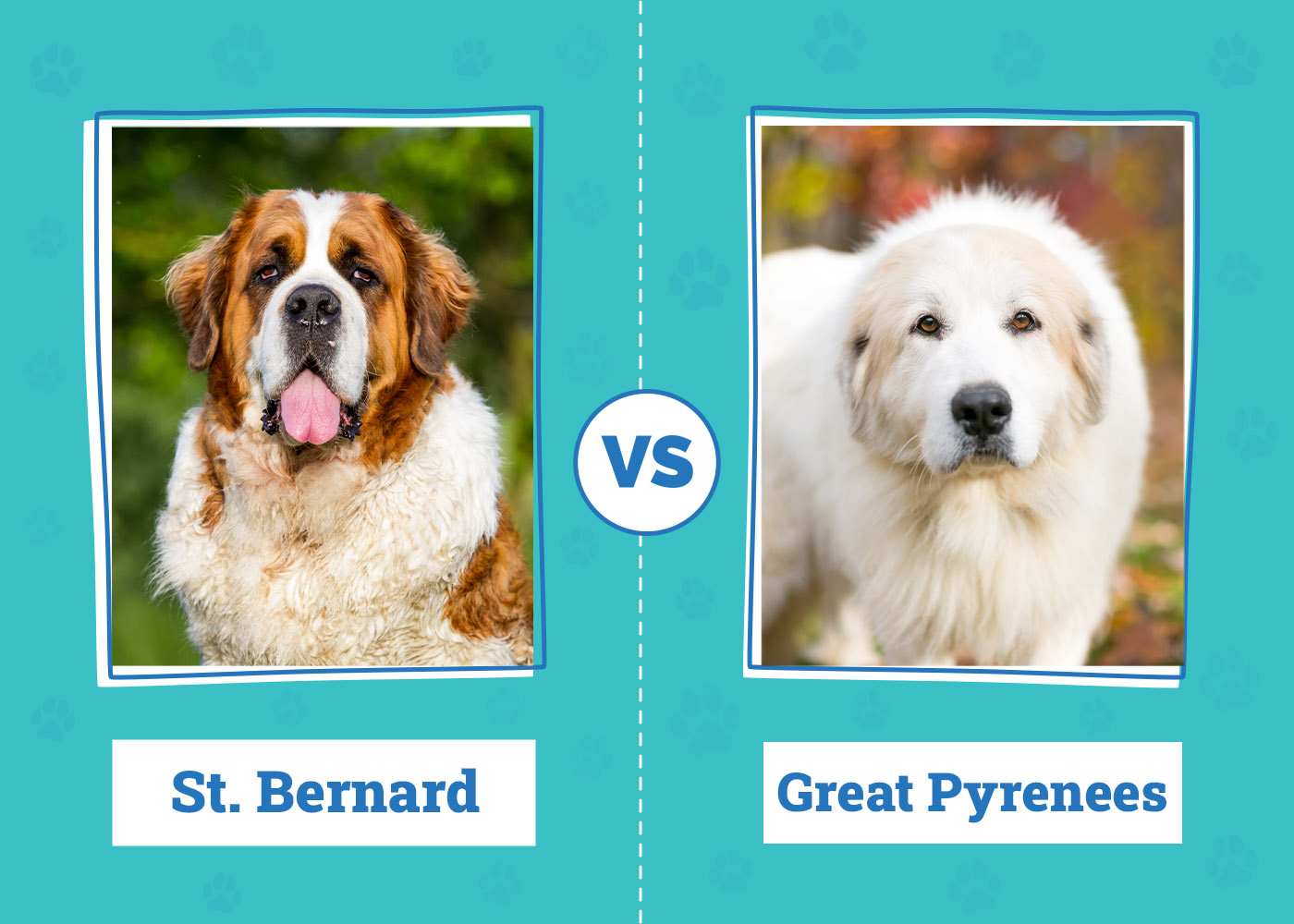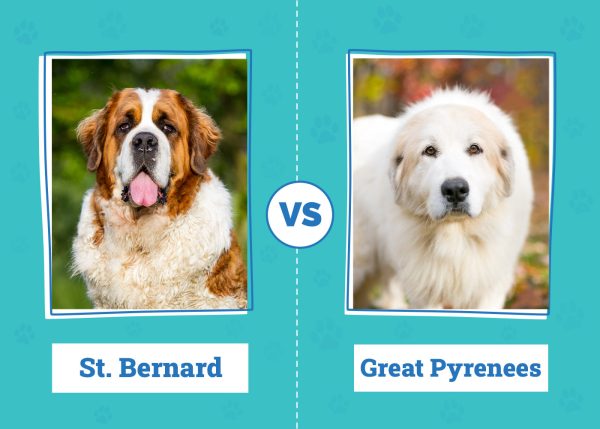Click to Skip Ahead
St. Bernard and Great Pyrenees – these large, fluffy dogs may seem pretty similar at first glance. However, they are actually quite different. They were bred for completely different purposes, which led to differing personalities. These differences affect which families these breeds are suitable for.
To figure out which dog is best for you, you need to understand their similarities and differences. Below, we’ll go over how these breeds compare so that you can make a proper decision for your family.
Visual Differences
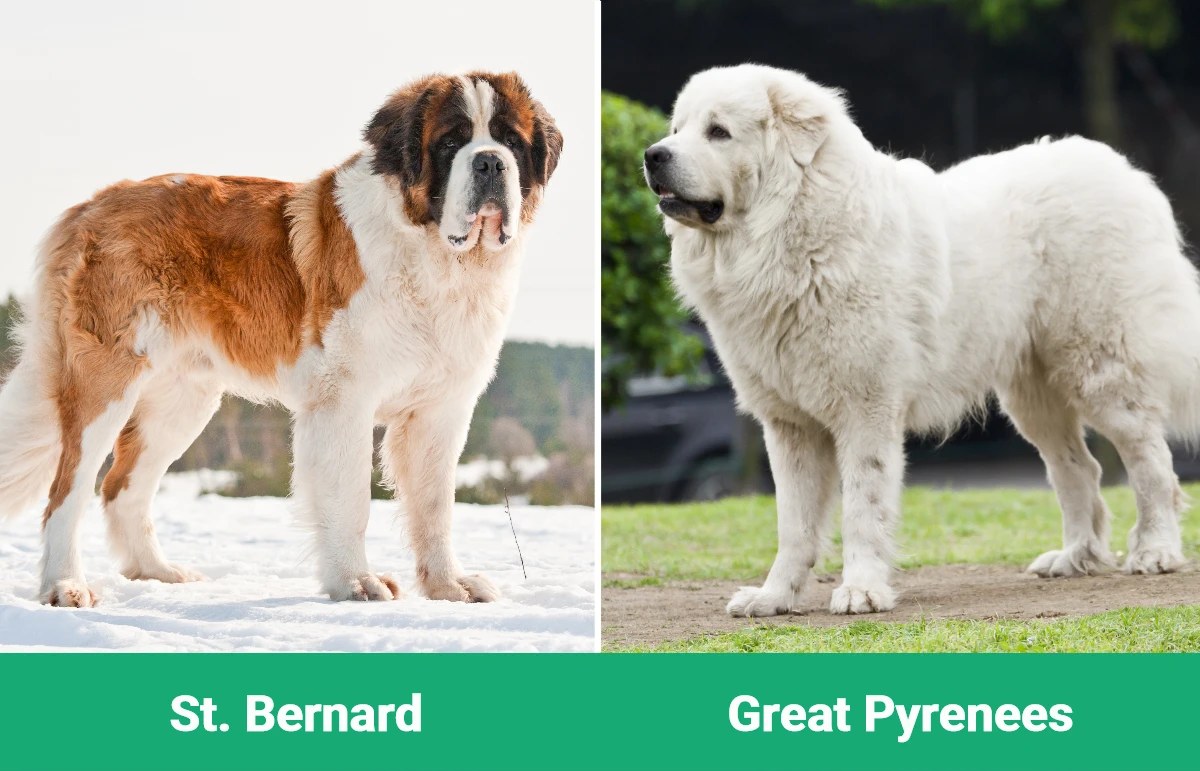
At a Glance
- Average height (adult): 25–30 inches
- Average weight (adult): 120–180 pounds
- Lifespan: 8–10 years
- Exercise: Low to moderate
- Grooming needs: Moderate
- Family-friendly: Yes
- Other pet-friendly: Yes
- Trainability: Moderate
- Average height (adult): 25–32 inches
- Average weight (adult): 85–100+
- Lifespan: 10–12 years
- Exercise: Moderate
- Grooming needs: Moderate to High
- Family-friendly: Yes
- Other pet-friendly: Yes
- Trainability: Low to moderate
St. Bernard Overview
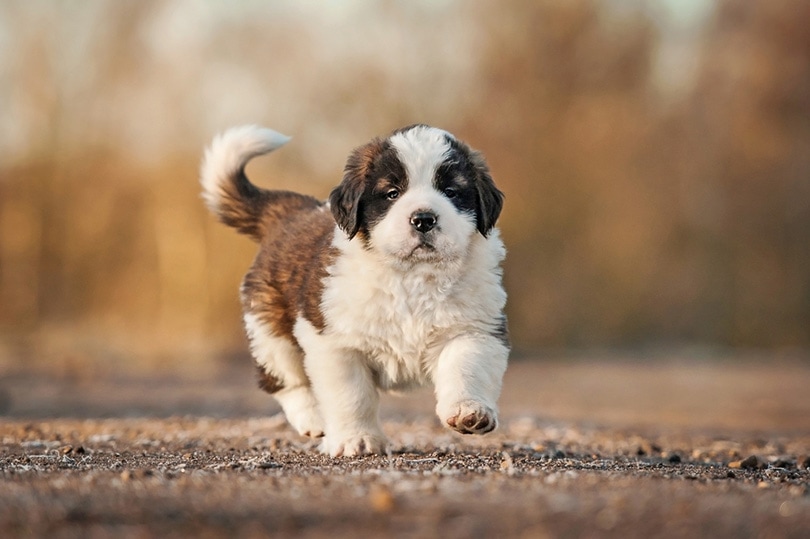
The St. Bernard is a large, fluffy dog that originated from the Swiss Alps. They were bred to be rescue dogs in difficult mountain passes, which means they are extremely gentle and rugged.
This breed is famous for their calm and affectionate temperament, as well as their love of children. However, owning a St. Bernard also requires a lot of care and responsibility, as these dogs have some special needs and habits that make them more high-maintenance than many other breeds.
Temperament
St. Bernards are known as “gentle giants” for a reason. They aren’t aggressive or overly energetic. Instead, they are pretty friendly and patient, especially around children.
They are also intelligent and eager to please their owners, but they can be stubborn and independent at times. They need obedience training from an early age to learn how to behave properly and follow commands. They tend to reach their stubbornness peak around 2 years old.
The St. Bernard is not a very vocal dog, but they will bark when they sense danger or strangers approaching their territory. They are very protective of their family and their home, and they make excellent watchdogs. However, they are not suitable for apartment living, as they need a lot of space to move around and exercise.

Health
St. Bernards have several health issues due to their large size. All the extra weight just puts a lot of wear on their body. They have a short lifespan of 8 to 10 years on average, and they can suffer from bloat, hip and elbow dysplasia, cataracts, entropion, allergies, heart problems, epilepsy, and drug sensitivity.
They also have a short muzzle, and this can lead to some breathing difficulties. It’s important to choose a reliable breeder who focuses on the breed’s health. You want a puppy that was bred to be healthy, not just cute.
Care
St. Bernards aren’t the highest maintenance dog out there, but they do require quite a bit of care.
These dogs need at least an hour of exercise every day, though you can expect this to be low to moderate in intensity. They prefer cool weather, and you should avoid exercising them when it is particularly hot. It’s important to provide socialization and mental stimulation, too. Otherwise, they can become bored and lonely.
The St. Bernard has a thick coat that sheds heavily and requires daily brushing to remove loose hair and prevent mats. They also drool a lot due to their loose lips, so they need their mouth wiped frequently to avoid messes. They need occasional baths with dog-specific shampoo and conditioner, as well as regular ear cleaning and nail trimming. All their fur and drool can be a bit much for some dog owners.
Great Pyrenees Overview
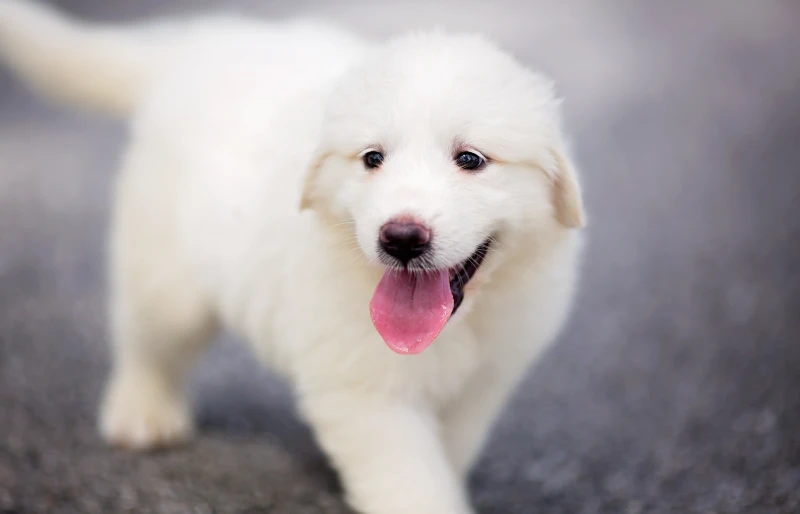
The Great Pyrenees was bred as a shepherd to protect flocks in the Pyrenees Mountains, hence their name. They’re very protective, affectionate, and vocal. However, they are also pretty independent, as they were bred to work alone.
While this dog does work great for families, they have some special needs that need to be considered. They aren’t for everyone.
Temperament
The Great Pyrenees is a loyal and gentle dog that is very devoted to its family and human companions. They are especially fond of children, whom they will watch over and defend from any perceived threat. They are also intelligent and confident dogs, but they can be very willful and disobedient at times.
You need to train them from an early age to ensure their protective instincts don’t get the best of them. They can be overwhelming at times, especially for first-time dog owners.
The Great Pyrenees is also a very protective and alert dog that will bark loudly and frequently to warn off intruders or predators. They were made to protect their flock, and that’s exactly what they do. They are also very territorial and may not get along well with other dogs or animals that they do not know.
You need to socialize them at a very young age to help them behave well around strangers. Otherwise, they will see everything as a threat and be potentially aggressive.
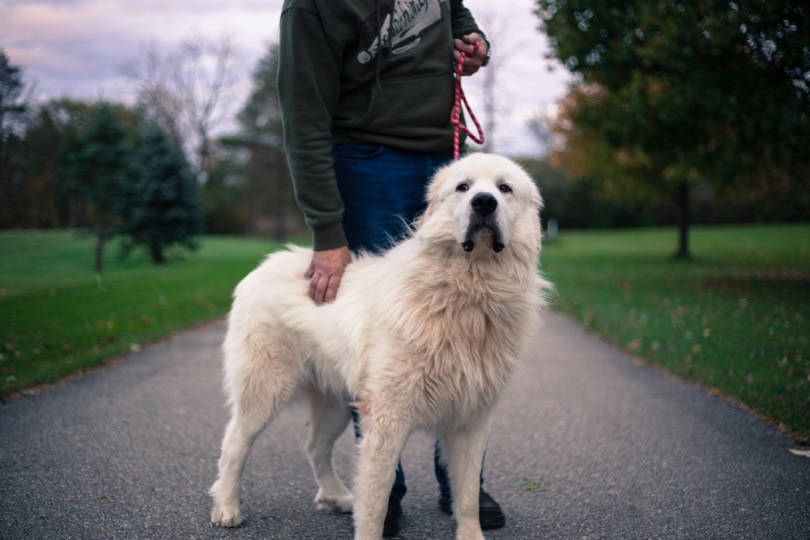
Health
These canines are generally healthy dogs. Unhealthy dogs wouldn’t have been able to guard their flocks very well, so health problems rarely got passed on to the next generation. For this reason, they have a longer lifespan than the St. Bernard; around 10–12 years.
However, they can suffer from a range of health conditions, including heart disease, chronic skin conditions, kidney disease, eye issues, osteoarthritis, deafness, elbow dysplasia, hip dysplasia, cancer, and bloat. These dogs may also be sensitive to heat, so they do best in cooler areas.
As always, choosing a puppy from a qualified breeder can help with some of these health problems. These breeders should focus on the health of the breed and avoid breeding dogs with health issues.
Care
The Great Pyrenees needs a lot of care and attention to keep them happy and healthy. They need at least 30 to 40 minutes of physical activity every day, preferably in cool weather or indoors, as they are very sensitive to heat. They work best for moderately active families, as they do require more exercise than most giant breeds.
These dogs have a thick, white coat that sheds a lot. They also drool somewhat, so you’ll need to wipe their mouth regularly. Daily brushing is absolutely required, and they typically have higher grooming needs than most owners expect.
Of course, you’ll also have to keep their nails trimmed and their ears cleaned.
Are the Great Pyrenees and St. Bernard Related?
These dogs may look similar, but they aren’t related. They may both be descendants of some ancient mountain breed. However, this is tracing their ancestry back very far.
These dogs have some physical similarities—they’re both big and hairy! However, these similarities are mostly due to their similar environments. When you live on a mountain, being big and hairy is helpful!

Which Breed Is Right for You?
The St. Bernard and Great Pyrenees are both suitable for families looking for larger dogs that are good with children. They have similar personalities, though the Great Pyrenees tends to be more protective. On the other hand, the St. Bernard is more laid back.
If you want a moderately active dog, the Great Pyrenees is the best option. If you want a dog that is more relaxed, you may want to consider the St. Bernard.
In the end, both of these dogs can make great pets. It mostly depends on whether you’re looking for a more active, protective dog or one that is more laid back.
Featured Image Credit: Top – Aneta Jungerova, Shutterstock | Bottom – Tychon Krug, Pexels

